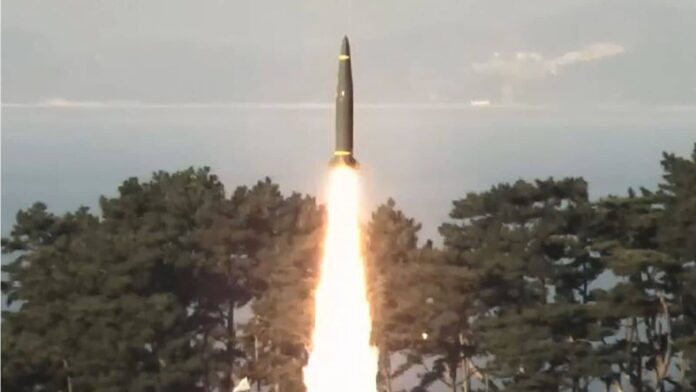THE LAST time China fired an intercontinental ballistic missile (ICBM) out over the Pacific, Xi Jinping was 27 years old, China’s GDP per head was less than $200 and America had just lifted an arms embargo on the country. So the missile that rose from Hainan island on September 25th—carrying a dummy warhead and plunging into the waters around French Polynesia, some 12,000km to the east—was a mark of China’s soaring nuclear ambitions.
The test comes at a time of heightened tensions in the region. On the same day as the launch, a Japanese warship sailed through the Taiwan Strait for the first time—a move that irked China, which claims both Taiwan and the strait. The two events are unlikely to be related, with the missile test probably planned well in advance. The warship was on its way to military exercises in the South China Sea, where Malaysia, Vietnam and the Philippines (an American treaty ally) are challenging China’s territorial claims. With its aggressive behaviour, China is “testing us all across the region”, President Joe Biden told the leaders of Australia, India and Japan on September 21st, in what he thought were private remarks.
Mr Biden’s intelligence analysts are busy studying the nature and timing of China’s missile test. It probably involved the DF-31AG, a nuclear-capable ICBM that is carried and fired from large lorries that can go off-road—the better to hide from American satellites. (If fired from China’s new silos, it could strike anywhere in the continental United States.) For the past 44 years every Chinese ICBM test has been conducted inland, usually in the Gobi desert. But the range for such tests is less than 3,000km. In order for China to test the missiles at their full range, without them flying over other countries, it must fire them into the Pacific. Such tests ensure that the warhead’s re-entry vehicle works as it should.
China may also have hoped to re-establish the credibility of the Rocket Force of the People’s Liberation Army (PLA). Five current or former commanders of the force were removed from their political roles in December amid reports that corruption had resulted in missiles loaded with water instead of fuel. But more embarrassing news came a day after the missile test when the Wall Street Journal reported that China’s most advanced nuclear attack submarine sank in May while sitting at a pier in the city of Wuhan. The sub, which was not yet in service, is likely to be salvaged and repaired. The cause is unknown.
Sunken vessels aside, American intelligence analysts are worried. In a report published last year, the Pentagon said that China was implementing a “launch on warning” policy, meaning it would fire its own nuclear missiles at the first sign of a nuclear strike—not after incoming nukes had landed, as would be the case under China’s declared policy of “no first use”. During the recent test, China may have hoped to assess how a missile crew would fare using a mobile launcher in an unfamiliar coastal location, says Decker Eveleth of CNA, an American think-tank. Working under such conditions might be expected in a “launch on warning” scenario.
The Pentagon report also said that China had 500 “operational” nuclear warheads (though many of these are thought to be at storage locations some distance from missiles). That is around twice the number it was thought to have had three years earlier. American officials estimate that China will have 1,000 warheads by 2030 and 1,500 by 2035. America has around 1,770 deployed warheads, and several thousand in reserve. “I see a lot of intelligence, but I’ve never seen anything that says they intend to stop at parity,” said Lieutenant General Andrew Gebara, the US Air Force’s deputy chief of staff for strategic deterrence, in September, referring to the deployed-warhead numbers. “Why would they?”
Nuclear doves retort that these assessments are overheated and uncertain. At present, America far outmatches China in overall warhead numbers. China, meanwhile, faces constraints on getting the fissile material needed to build new warheads. “It is far from certain that the future pace of China’s arsenal growth will be constant,” says Fiona Cunningham of the University of Pennsylvania.
America’s defence department tends to see things differently. It admits to having underestimated the pace of China’s advances. When crafting America’s nuclear modernisation programme over a decade ago, the growth and diversification of China’s arsenal were “something we neither anticipated nor accounted for”, said Vipin Narang, then the department’s top nuclear official, in August. But in this new nuclear age, he said, China’s progress would be the “defining feature”.
© 2024, The Economist Newspaper Ltd. All rights reserved. From The Economist, published under licence. The original content can be found on www.economist.com
Catch all the Business News, Market News, Breaking News Events and Latest News Updates on Live Mint. Download The Mint News App to get Daily Market Updates.
MoreLess
#missile #test #China #marks #growing #nuclear #ambitions
